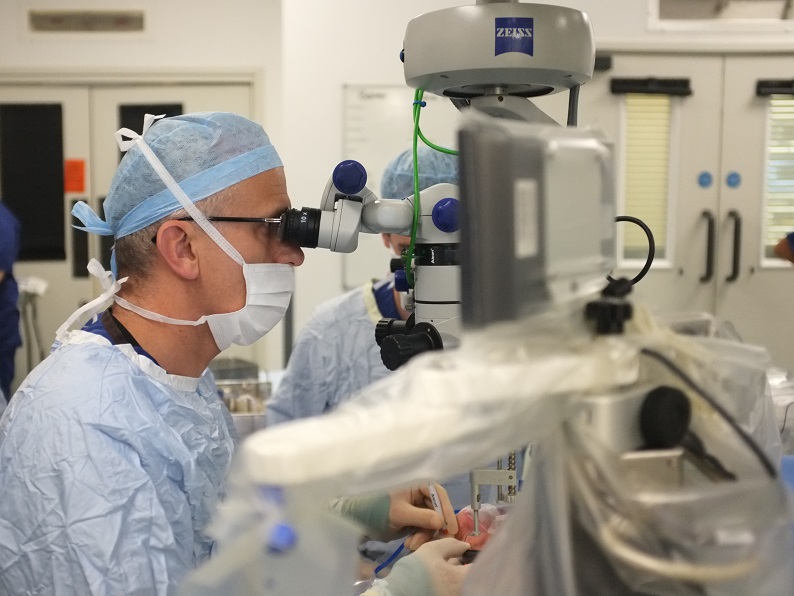
A robot has been used to inject a drug into the back of the eye in a world first for the next phase of a landmark clinical trial at Oxford’s John Radcliffe Hospital.
Prof Robert MacLaren used the remotely controlled robot to administer a tiny volume of blood dissolving agent tPA under the retina to treat a haemorrhage, an accumulation of blood in the eye that causes vision loss.
It was also the first time that robot-assisted eye surgery was performed under local anaesthesia.
It is now hoped the robot can be used for other pioneering surgeries such as gene therapy, where a virus is delivered to replace missing genes that lead to loss of vision.
The device has been developed by Preceyes BV, a Dutch medical robotics firm established by the University of Eindhoven, and is being trialled at the John Radcliffe by the University of Oxford. The injection mechanism used was developed by the University of Oxford and integrated into the robot.
In September, the robotic retinal dissection device (R2D2) clinical trial made international headlines as it was the first to use a robot to assist surgery inside the eye.
Surgeons used the remotely controlled robot to lift a membrane 100th of a millimetre thick successfully from the retina at the back of the right eye.
A further five of these operations were carried out successfully before moving onto this next phase of the trial which involves using the robot to operate under the retina, the delicate light sensitive membrane less than 1/3 of a millimetre thick at the very back of the eye.
The device is designed to eliminate unwanted tremors in the surgeon’s hand – such as through their pulse – so tiny surgical manipulations can be safely carried out within the eye.
The robot acts like a mechanical hand with seven independent computer-controlled motors resulting in movements as precise as 1,000th of a millimetre in scale.
The surgeon uses a joystick and touchscreen outside the eye to control the robot whilst monitoring its progress through the operating microscope.
This gives the surgeon a notable advantage as significant movements of the joystick result in tiny movements of the robot.
The trial is funded by the NIHR Oxford Biomedical Research Centre, a collaboration between the University and Oxford University Hospitals NHS Foundation Trust to fund research.
Prof MacLaren (pictured) said: “It is still early days, but we hope this milestone brings us closer to our eventual goal of using robotic surgery to deliver gene therapy and stem cell treatments for currently incurable retinal diseases.”
Prof. Marc de Smet, MD, Chief Medical Officer of Preceyes, said: “This new milestone is an important next step in a process of breakthrough innovation for Preceyes.”
He said: “This demonstrates that our technology enables to perform these high-precision drug delivery treatments in the eye.”